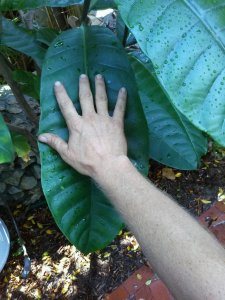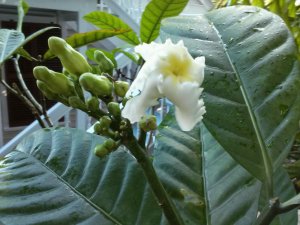kwtimo
Well-Known Member
- 596
- 22/05/10
- 342
- 83
Here is what I would consider the tree form of Tabernaemontana species. T. crassa is as easy to grow as all of the other Tabernaemontanas that I have posted on, but has the advantage of larger overall height and massive leaf size. Its white clusters of 3/4 to 1 inch individual flowers are deliciously scented too. These do quite well in morning direct or all day indirect light, with average water needs. They respond very well to frequent fertilization. I haven't had any success with propagating these yet, but am trying different methods this coming year. The grower I purchased them from had plants with seed pods on them. They come in pairs, much like Stemmadenia litoralis (that will be another thread) but they are the size of large limes. I don't have a pic of the overall tree yet, but will post when I do. Dean, I'm thinking you probably know of this one. If not, maybe you should! I was standing on top of a five foot fence to be able to get a pic of the bloom to give you an indicator of the size of the plant.




